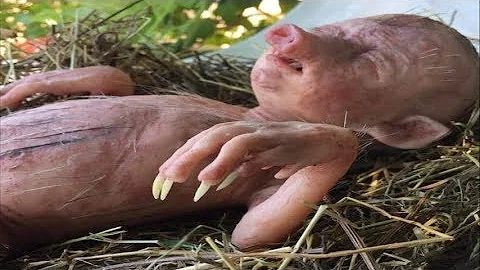The farmer was left amazed when he witnessed a pig giving birth to a hybrid creature that combined human and animal features in his garden.

This type of creature, commonly referred to as a chimera, has been a recurring theme in various myths and legends throughout history. Often portrayed as a fearsome monster, chimeras are known to inspire terror and disgust in those who behold them.
In recent years, the idea of creating such a creature through genetic engineering or other scientific means has become a topic of discussion and speculation. While the actual creation of a chimera remains controversial and ethically fraught, some researchers have explored the potential benefits of using chimeras for medical research.
One proposed application of chimeras in medical research is the development of human organs for transplantation. By introducing human stem cells into animal embryos, researchers hope to create animals with human organs that can be used for transplantation without the risk of rejection by the recipient’s immune system.

However, the creation of chimeras raises a host of ethical and practical concerns. Some critics argue that such creations could lead to unpredictable and potentially dangerous consequences, both for the animals involved and for human health.
Others worry that the creation of chimeras blurs the line between humans and animals in ways that are ethically problematic.
Despite these concerns, researchers continue to explore the potential applications of chimeras in medical research. While the creation of a chimera with a truly grotesque form remains firmly in the realm of science fiction, the possibility of creating animals with human-like organs challenges our understanding of these boundaries.
In conclusion, the farmer’s discovery of a pig giving birth to a hybrid chimera creature sparked intrigue and fascination. While the concept of chimeras has long been a part of myths and legends, modern science has raised the possibility of creating such creatures for medical research.
However, ethical considerations and potential risks continue to surround the idea, and researchers tread cautiously as they explore the potential applications of chimeras in advancing medical science.






